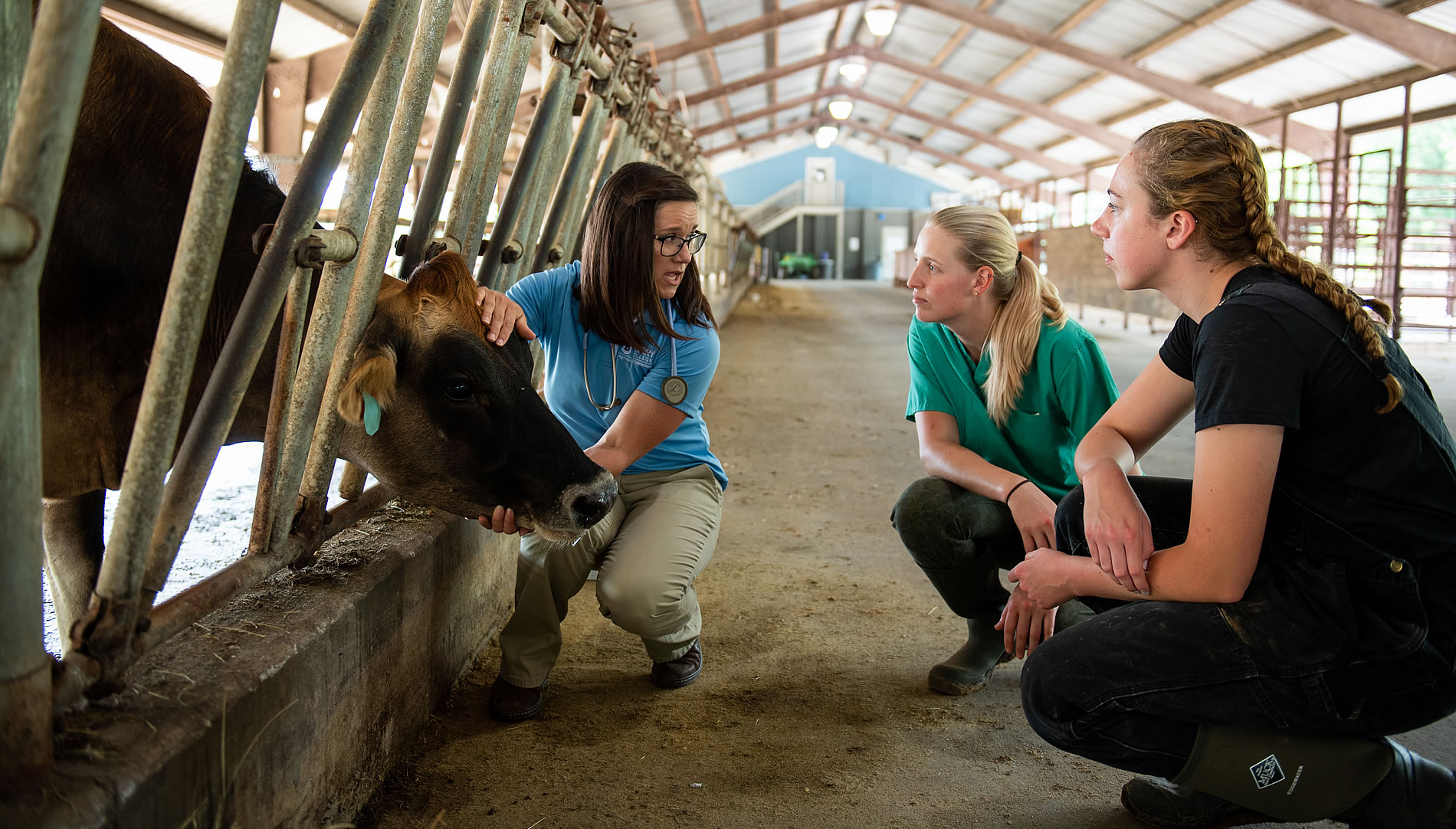While your friends might worry about what their future profession will be, you know you’re meant to pursue a career working with animals. You’ve been curious about how to become a veterinarian since your first interaction with a pet dog, a stray cat or some other animal encounter.
But despite knowing what you want to do for a living, you’re a little uncertain of how to proceed. Well, consider this your step-by-step guide on how to pursue your dream of becoming a veterinarian.
The pre-vet student’s manual on how to become a veterinarian
The most obvious requirement is earning your doctor of veterinary medicine (DVM) degree, but there are other important steps along the way.
1. Complete four years of undergraduate study
It’s possible to attend veterinary school without earning a bachelor’s degree first, but be wary of going this route. Devoting four years to your undergraduate work allows you to develop a well-rounded education and deepen your expertise in your chosen major.
And consider that nearly every DVM program requires applicants to complete classes in biology or zoology, inorganic chemistry, organic chemistry, biochemistry, physics, math, English and possibly more. Some schools have very rigid specifications, so make sure you review the prerequisite chart from the Association of American Veterinary Medical Colleges (AAVMC). It’s also worth considering attending a college that offers a pre-vet track given there are so many academic expectations.
2. Consistently gain animal and veterinary experience
Both of these activities are important (and often a lot of fun!) for aspiring veterinarians, but it’s critical that you know the difference. Animal experience is any type of work involving animals. That can include volunteering at a shelter, participating in 4-H and dealing with livestock. Veterinary experiences are activities performed under the supervision of a DVM, such as a shadowing program.
There isn’t a hard-and-fast requirement for how much of either experience you need. That said, it’s a good idea to accumulate at least a couple hundred hours of both types of activities. Not every school specifies a minimum number of hours, but students who applied to begin veterinary school in 2018 averaged more than 1,600 hours each for veterinary experience and animal experience.
3. Get involved while in college
Involvement in extracurricular activities might not be a strict prerequisite, but it will likely result in an overall better college experience. Getting involved in different clubs, sports or other organizations will also give veterinary school admissions committees a better sense of who you are and whether you’re right for their program. And these activities don’t all have to be related to veterinary medicine.
4. Complete your remaining vet school prerequisites
In addition to completing coursework and gaining experience, there are a number of other vet school prerequisites you’ll need to complete prior to applying to vet schools. Candidates are also required to submit letters of evaluation, write a series of essays and submit official scores from the Graduate Record Examination (GRE). These application components all help give schools a sense of whether you’re prepared for the rigors of a DVM program.
5. Apply to programs and obtain your DVM
It’s a good idea to know of some veterinary medicine programs you might be interested in attending near the beginning of college to help you plan your coursework. You’ll need to further narrow your list when it’s time to apply. Students target about five schools on average.
Upon gaining acceptance, you’ll complete four years of study. You’ll begin by attending classes and labs, then progressively start gaining more hands-on experience. The final year of your DVM program will be devoted to clinical rotations to help you round out your practical skills.
6. Secure your license
Most veterinarians will tell you the North American Veterinary Licensing Examination (NAVLE) is the most difficult test you’ll ever take. It includes 360 multiple-choice questions relevant to entry level practice. You must secure a passing score, which is set at 425 once the raw scores are scaled, to obtain your license.
Once your test has been scored, you’ll be notified. Your results will also be distributed to the state licensing board you used to apply for the NAVLE.
7. Complete additional training if you want to specialize
You’re free to begin practicing once you’ve obtained your license, but some veterinarians pursue additional training to specialize in fields like emergency medicine and critical care or shelter medicine. You need to apply for these postgraduate programs through the Veterinary Internship & Residency Matching Program.
8. Start your career as a veterinarian
Once you’ve completed all education, training and licensing requirements, you can begin practicing. You may wish to join a small clinic, find a position at a larger organization or even start your own business. There are so many ways you can shape your career — it’s really up to you.
Pave your path to becoming a veterinarian
This overview can help answer questions for anyone who’s ever wondered how to become a veterinarian. It might have even solidified that this is the right career path for you.
If you’re certain that you’re meant to become a veterinarian, you might want to consider how you can continue your journey. Choosing an undergraduate program like Berry College’s pre-vet track can help you meet all the veterinary school prerequisites. To learn more about how you can work toward your professional goals, head to our Animal Science program page.



